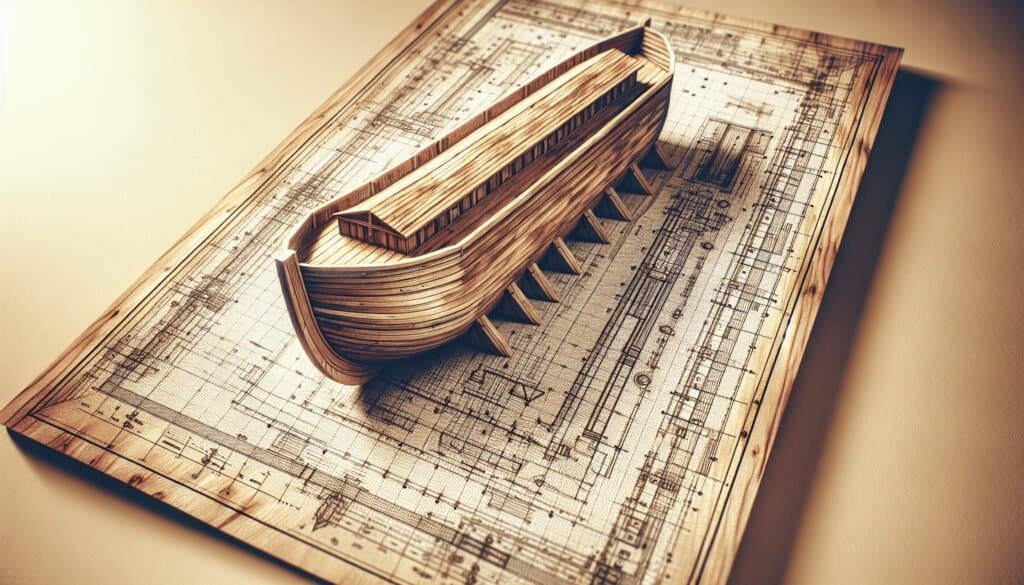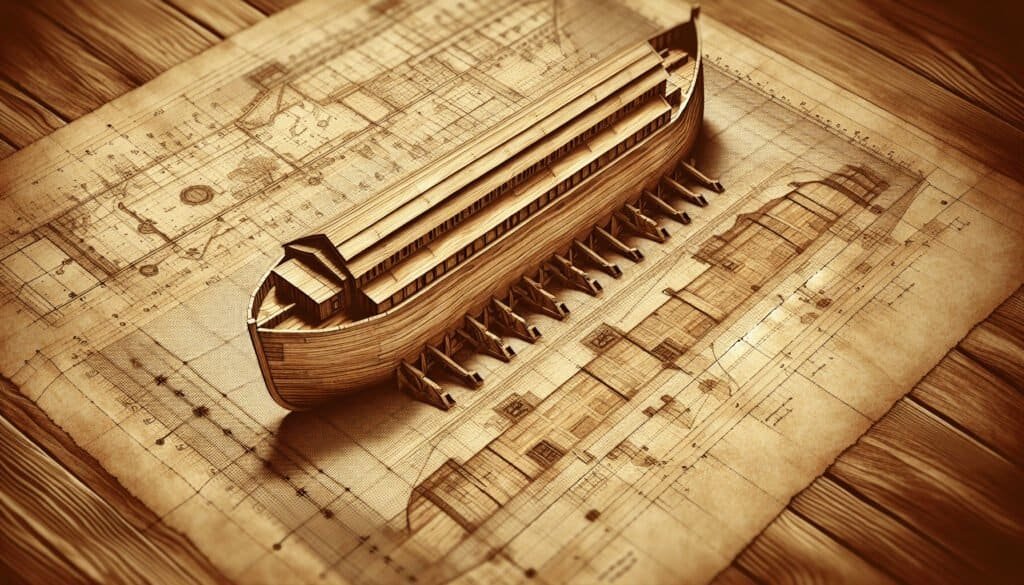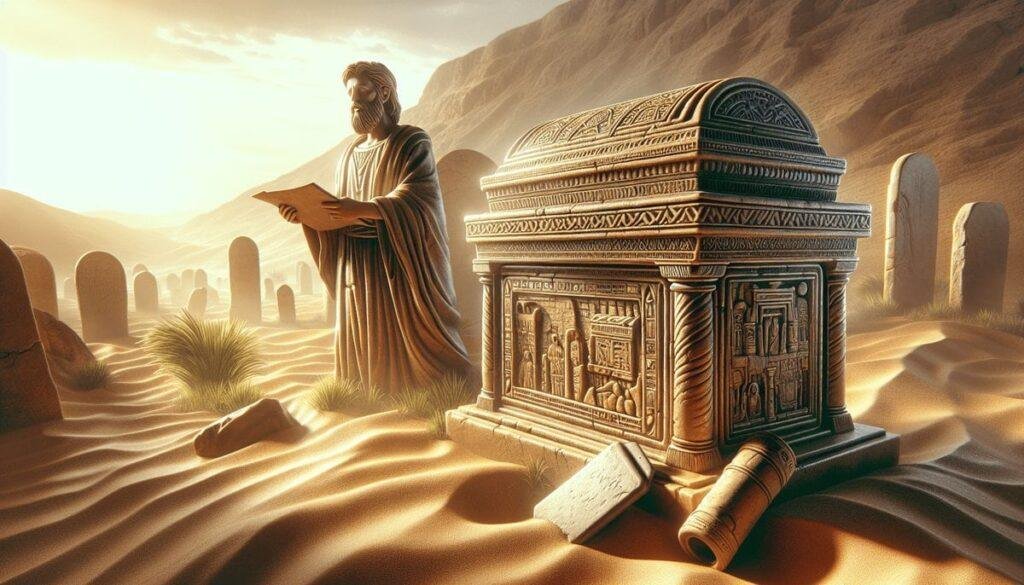What do you think of when you hear the word “ark”? Maybe a flood, some animals two by two, or perhaps you think of adventure. But there’s so much more to it, especially when discussing the Ark of the Covenant and the materials that went into its design. One material stands out from the rest—acacia wood. Let’s unravel the intriguing blueprint of this sacred object and its significant role in biblical history.

Understanding the Ark of the Covenant
The Ark of the Covenant is much more than an ancient relic—it is a profound icon of faith and divine presence in the Judeo-Christian tradition. Constructed according to specific instructions found in the Book of Exodus, it housed the stone tablets inscribed with the Ten Commandments. To appreciate its importance, it’s essential to understand not only what the Ark represents but also how its design conveys theological themes.
The Historical Context of the Ark
Imagine living in ancient times, navigating a world where faith dictated the rhythms of everyday life. The Israelites, wandering the desert after their exodus from Egypt, needed stability and assurance. The Ark provided both, serving as a physical manifestation of God’s covenant with His people. It held monumental significance—an embodiment of divine stipulations and guidance.
Significance of Acacia Wood
Acacia wood deserves its moment in the spotlight. This resilient material was specified in the Ark’s design for several compelling reasons. Do you recall how the trees stand tall in arid landscapes? Acacia trees thrived in the Middle Eastern climate, symbolizing strength and endurance—a fitting material for something so crucial.
Durability and Availability
Acacia wood is exceptionally durable and resistant to decay, making it a practical choice for construction, especially in desert terrains where environmental conditions could easily deteriorate weaker materials. Its availability in the region made it an accessible option, bringing practicality into alignment with divine design.
Unique Properties of Acacia Wood
Acacia wood has unique physical properties that contributed to the Ark’s sanctity and physical integrity. Not only does this wood provide resilience, but it also has a rich, warm tone that speaks to its beauty. Moreover, its natural resistance to insects served to protect the Ark from the ravages of time.
Discussion on Aesthetics
The aesthetics of the Ark also offered visual significance. An object of worship, the Ark needed to be both functional and aesthetically pleasing. The beauty of acacia wood added to its allure and the respect it commanded among the Israelites. Imagine standing before such a divine artifact; you’d feel its weight in both material and meaning.
The Design Blueprint of the Ark
Now that we understand the significance of acacia wood, let’s unravel the detailed design blueprint of the Ark itself. The meticulous instructions for its construction, as delineated in Exodus 25:10-22, cover various elements, including size, shape, and ornamentation.
Dimensions and Format
The Ark was crafted as a rectangular box with a specific set of dimensions given in cubits. Typically, a cubit is roughly equivalent to eighteen inches, though variations exist.
| Measurement | Dimensions in Cubits | Dimensions in Inches |
|---|---|---|
| Length | 2.5 | 45 |
| Width | 1.5 | 27 |
| Height | 1.5 | 27 |
This precise design emphasizes the importance of following God’s instructions. Each dimension holds meaning and contributes to the Ark’s divine purpose.
Construction and Components
The Ark’s design features several crucial components that further enhance its spiritual and physical significance.
The Lid: The Mercy Seat
The lid of the Ark, known as the Mercy Seat, plays a pivotal role. Carved from pure gold, it featured two cherubim facing each other, their wings stretched over the lid, creating a space believed to be the dwelling place of God among His people.
The Staves and Rings
The Ark had rings on its sides for staves to be inserted. This design detail allowed for transportation, meaning the divine could move with the people. It reflects mobility in faith, emphasizing that God is not static but follows His people through their journeys.
Theological Implications of the Ark’s Design
The Ark’s design runs deeper than its physical structure—each aspect holds theological implications.
The Importance of Obedience
The detailed instructions highlight the significance of obedience to divine will. Just as the Israelites followed the blueprint given to them, contemporary followers of faith find meaning in adherence to their beliefs, drawing parallels between ancient texts and modern spiritual practices.
Representing God’s Presence
The Ark served as a conduit between humanity and the divine. The processional rituals surrounding the Ark are laden with spiritual meaning, reinforcing the belief that God dwells among His people and that His presence can be approached with reverence.
Archaeological Insights
Curious about the archaeological context surrounding the Ark’s existence? Numerous archaeological findings draw connections between biblical texts and historical records.
Evidence of Acacia Wood
Despite its age, references to acacia trees and their use in ancient construction have been documented. Remnants of acacia wood have been found in archaeological excavations, providing real-world evidence of its use in sacred contexts, reaffirming its significance within the biblical narrative.
Archaeological Artifacts
The discovery of ancient artifacts, such as altars and shrines constructed from acacia, sheds light on its prevalence and importance in religious practices. These findings reflect a broader understanding of its use, showcasing continuity in sacred practices throughout time.

The Ark and Ancient Israelite Culture
Understanding the cultural significance of the Ark among the Israelites offers a glimpse into their worldview and religious practices.
Symbol of National Identity
The Ark was not just a religious symbol but a national one. It became crucial in battles and rites, exemplifying divine favor. It held a central role during significant events, such as the crossing of the Jordan River and spiritual celebrations.
Rituals and Festivals
Various rituals centered around the Ark contributed to its significance. The Day of Atonement, for instance, involved the high priest entering the Holy of Holies, where the Ark resided, propitiating for the sins of the people. The Ark, therefore, embodies themes of redemption, sacrifice, and divine mercy.
Modern Perspectives: The Ark Today
Fast forward to the present—what relevance does the Ark hold today? Though it’s no longer a physical object in the same way, the Ark continues to resonate in spiritual and cultural discussions.
Spiritual Interpretations
Many scholars and theologians view the Ark as a metaphor for the human quest for divine connection. It symbolizes the longing for divine presence and assurance, echoing throughout various religious traditions. Its influence can be seen in art, literature, and even modern spiritual practices.
Conversations About Authority and Trust
The Ark also prompts discussions about authority within religious traditions and the trust people place in their beliefs. Its detailed design and sacred designation speak to the complexities of faith, tradition, and the quest for understanding divine will.
Conclusion: Tying Ancient Contexts to Modern Perspectives
The Ark of the Covenant stands as a monument to faith, obedience, and divine presence. Its design, intricately tied to acacia wood, not only embodies strength and durability but also illustrates the complex relationship between humanity and the divine throughout ancient and modern history.
As you think about the Ark, consider how this ancient blueprint still sparks conversations about identity, faith, and the relentless pursuit of connection with the sacred. It serves as a bridge linking past traditions with contemporary spiritual experiences, reminding us that the quest for understanding transcends time and culture.
Embracing the narrative of the Ark fosters a deeper appreciation for the intricate tapestry of spirituality woven through the ages, rooted in faith and the divine promise embedded within its very structure.


